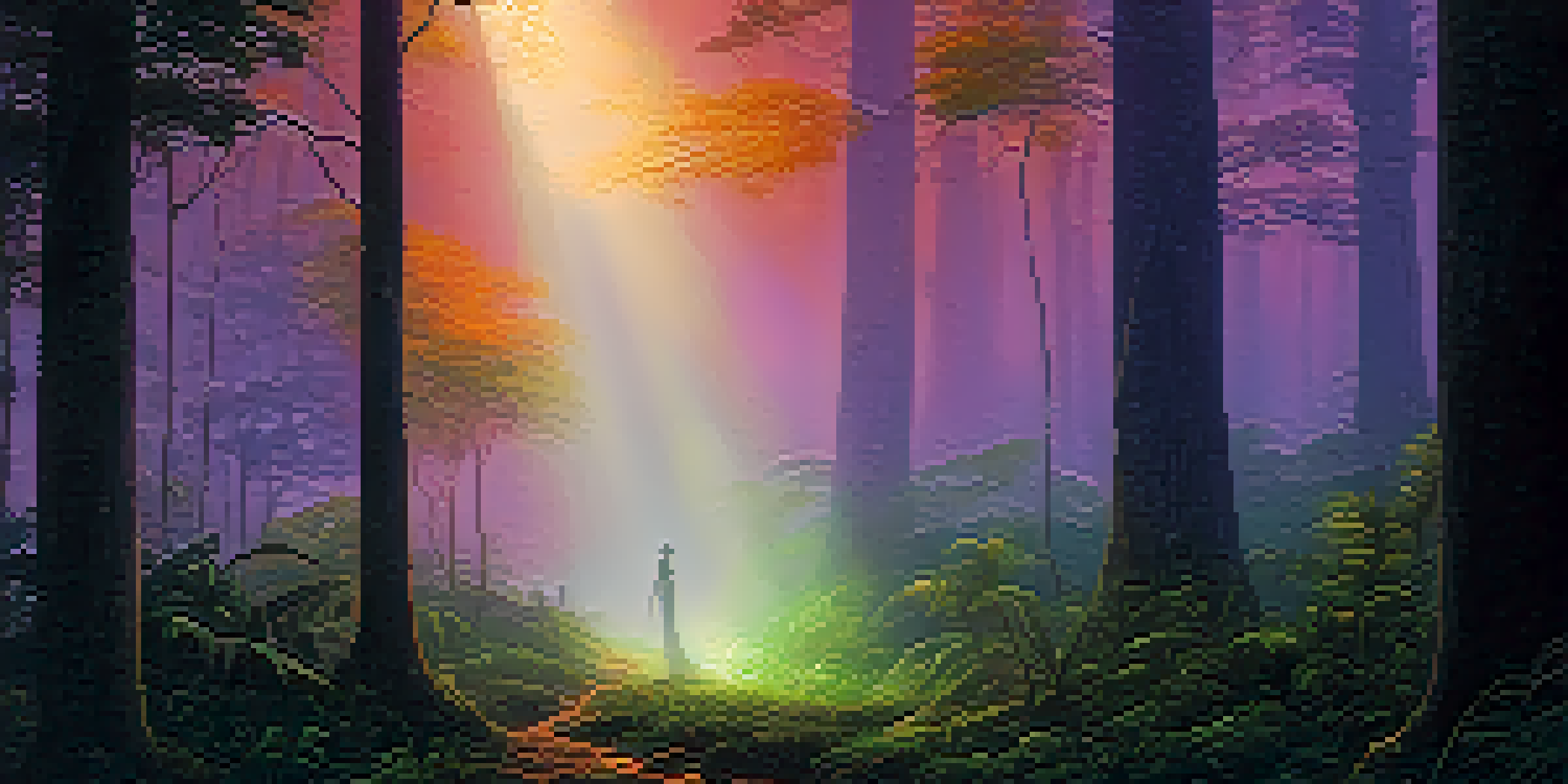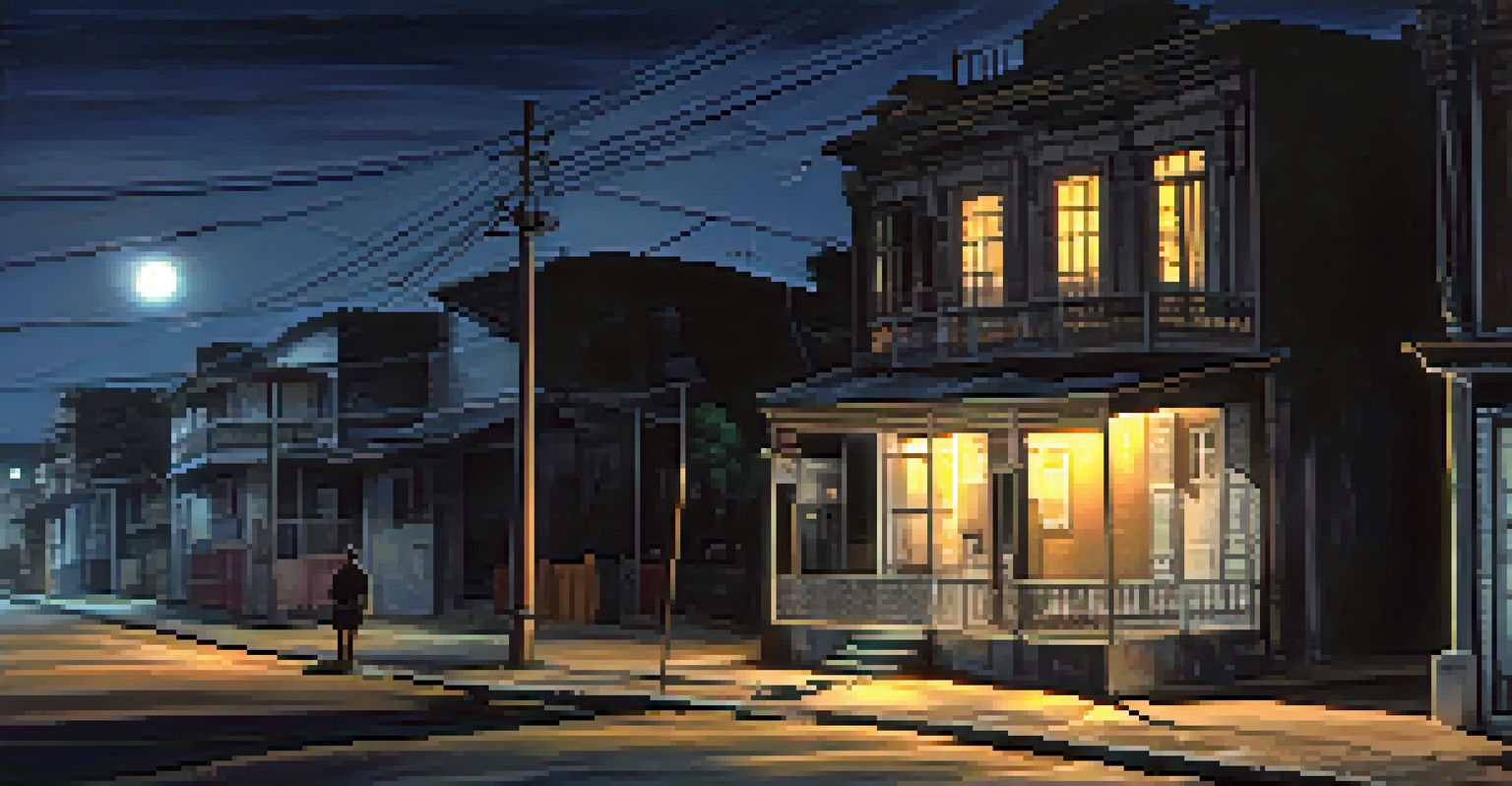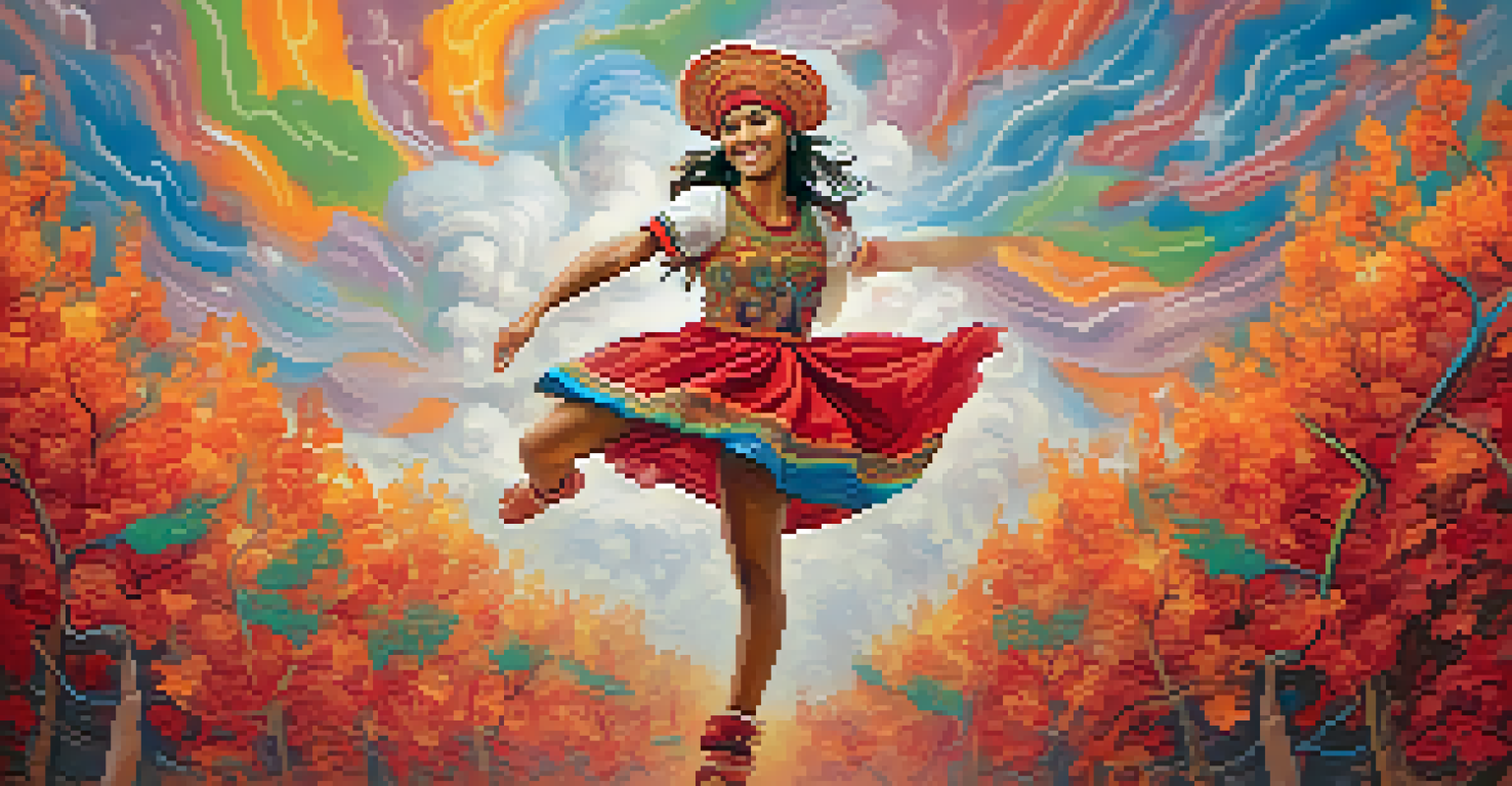Brazilian Horror Films: A Unique Perspective on Fear

The Roots of Horror in Brazilian Cinema
Brazilian horror films have a rich history that intertwines with the country's diverse culture. From folklore to socio-political issues, these films often reflect the unique fears and anxieties of Brazilian society. By examining local legends and traditions, filmmakers tap into a reservoir of storytelling that resonates deeply with audiences.
Horror films have always been about confronting our deepest fears, and in Brazil, they uniquely reflect the cultural and societal tensions that shape our reality.
Early examples of horror in Brazil can be traced back to the 1960s and 70s, where filmmakers started to blend traditional horror elements with Brazilian folklore. Movies like 'A Noite do Espantalho' introduced audiences to a frightful blend of local myths and cinematic horror. This foundation set the stage for future filmmakers to explore more contemporary themes through the horror genre.
As Brazilian society evolved, so did its horror films. The genre became a canvas for filmmakers to express societal tensions and cultural identity, making Brazilian horror not just about frights but also about exploring the human condition.
Cultural Themes in Brazilian Horror
One of the most fascinating aspects of Brazilian horror is its deep connection to cultural themes. Many films focus on the struggles between modernity and tradition, showcasing how characters navigate a rapidly changing society. This tension often manifests in supernatural elements that challenge the characters' understanding of reality.

For example, films like 'O Som ao Redor' merge psychological horror with social commentary, reflecting the fears surrounding urban life in Brazil. The portrayal of haunted houses or malevolent spirits often symbolizes the ghosts of Brazil's past, including colonization and economic disparity. These themes create a rich tapestry that enhances the horror experience.
Cultural Roots Shape Horror Stories
Brazilian horror films deeply intertwine with local folklore and cultural themes, reflecting societal fears and identities.
By embedding cultural themes into their narratives, Brazilian filmmakers invite audiences to confront not only their fears but also their cultural identity. This approach makes the horror genre a powerful tool for social reflection and critique.
The Role of Folklore in Brazilian Horror
Folklore plays a significant role in shaping the narrative and aesthetic of Brazilian horror films. Characters from local legends, such as the 'Curupira' or 'Saci Pererê', often make appearances, bringing with them a sense of cultural authenticity. These figures represent the fears and morals ingrained in Brazilian society.
The beauty of horror lies in its capacity to reveal uncomfortable truths about ourselves and society, often in a way that is both engaging and reflective.
Films like 'As Boas Maneiras' creatively weave folklore into their storylines, showcasing how these mythical creatures interact with modern characters. This blend of the old and new creates a unique horror experience that resonates on multiple levels. Audiences are not just scared; they're engaged with their cultural heritage.
By drawing on folklore, filmmakers create a bridge between the past and present, highlighting the enduring nature of these stories. This connection enriches the horror genre, allowing viewers to explore their fears through a familiar lens.
Social Commentary Through Horror
Brazilian horror films often serve as a powerful medium for social commentary. By portraying the darker sides of society, filmmakers highlight issues such as inequality, violence, and corruption. These themes are not just background elements but are integral to the horror experience, making audiences reflect on their reality.
For instance, 'Cidade de Deus' uses elements of horror to depict the brutality of life in the favelas, transforming everyday struggles into nightmarish scenarios. This approach amplifies the impact of social issues, making them resonate more deeply with viewers. Horror becomes a vehicle for exploring uncomfortable truths about society.
Horror as Social Commentary
Filmmakers use horror to address pressing social issues, turning real-life struggles into compelling narratives that resonate with audiences.
Through horror, Brazilian filmmakers challenge audiences to confront these issues head-on. By engaging with social commentary, viewers are compelled to reflect on their own lives and the world around them.
Modern Brazilian Horror: Innovations and Influences
In recent years, Brazilian horror has seen a surge of innovation, with filmmakers experimenting with new styles and narratives. The rise of streaming platforms has provided a broader audience and allowed for the exploration of diverse stories. This shift has opened doors for fresh voices and unique perspectives within the genre.
Films like 'Morto Não Fala' and 'O Cemitério das Almas Perdidas' showcase how modern filmmakers blend traditional horror tropes with contemporary storytelling techniques. This innovation not only captivates audiences but also elevates Brazilian horror on the global stage. The genre is no longer confined to local audiences but is gaining international recognition.
As filmmakers continue to push boundaries, Brazilian horror evolves, reflecting both local culture and global influences. This dynamic interplay keeps the genre vibrant and relevant, ensuring that it remains a vital part of Brazil's cinematic landscape.
Influential Brazilian Horror Filmmakers
Several key figures have shaped the landscape of Brazilian horror cinema, each bringing their unique vision and style. Directors like José Mojica Marins, known for his iconic character Coffin Joe, have left a lasting impact on the genre. His films often blend horror with social commentary, creating a distinctive voice that resonates with audiences.
Modern directors like Rodrigo Aragão and Juliana Reis are also making waves with their innovative approaches to storytelling. Their works often incorporate elements of fantasy and folklore, showcasing the diversity within Brazilian horror. This new wave of talent is crucial for the genre's evolution, ensuring it remains fresh and engaging.
Innovation Reshapes Modern Horror
Recent advancements in technology and storytelling are revitalizing Brazilian horror, making it more accessible and appealing to global audiences.
These filmmakers not only entertain but also inspire future generations to explore horror through a Brazilian lens. By nurturing their unique perspectives, they contribute to a rich tapestry of horror cinema that continues to captivate audiences worldwide.
The Future of Brazilian Horror Films
As the global interest in horror continues to grow, the future of Brazilian horror looks promising. With a rich cultural backdrop and a wealth of stories to tell, filmmakers are set to explore new narratives that push the boundaries of the genre. This potential for innovation is exciting, as it opens up possibilities for unique storytelling.
Emerging technologies and platforms are also influencing the landscape, allowing filmmakers to reach wider audiences. The rise of virtual reality and interactive storytelling could bring fresh dimensions to Brazilian horror, engaging viewers in entirely new ways. This evolution will likely attract a new generation of fans eager for immersive experiences.

Ultimately, the future of Brazilian horror films will depend on the balance between tradition and innovation. By honoring their roots while embracing new ideas, Brazilian filmmakers will continue to create compelling stories that resonate both locally and globally.